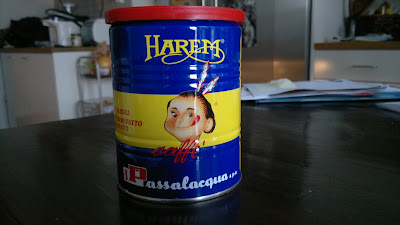日曜日の夕方、先週に引き続きパスタ教室に行ってきました。久しぶりに晴れた週末でした。お天道様にお目にかかったのは、何週間ぶりだろうとうれしくなり思わずこんな写真を撮りました。夕暮れ時に沈む太陽を背に公園の野外リンクでアイスホッケーをする若者たち。(動きからして…)とっても北欧な風景ですね。
I went to anothe pasta class on Sunday evening. It was a really sunny weekend. I was wondeiring for how many weeks I missed it, so decided to take a photo of skate link in the park and some young people (assuming from their moves) playing an icehokey. It is very Nordic scene.
先週はソースの作り方が中心でしたが、2回目は4種類のフレッシュパスタを作りました。混ぜたり捏ねたりのばしたり形をととのえたりして実際に手を動かしたので前回よりも楽しめました。今回のメニューは以下のとおり。
The last class focused on making sources and this time was about fresh pasta. I was able to try myself for all four pasta making, so enjoyed more than the first class. The menu was as follows.
1) fettuccine fresche (with rabu sauce/フェトチーネ)
2) ravioli (with minced meat filling/ひき肉のそぼろが入ったラビオリ)
3) cacio e pepe pici (pecorino romano cheese and pepper source/ペコリーノ・ロマーノチーズとペッパーのピチパスタ)
4) gnocchi di patate(with pesto sauce/ペストソースのニョッキ)
上の二つは卵を使ったパスタ。3番目のは卵を使わずに小麦粉と水だけで作ったパスタです。T
he first two pasta used eggs and the third one was made only from flour and water.
まずは、1)と2)の卵を使ったパスタ。同じ生地を使って、フェトチーネとラビオリをつくりました。生地を捏ねたあとパスタマシーンでのばしているところです。
First, we made fettuccine and ravioli from the same dough. This is how I tried using the pasta machine and make the doubh thinner and thinner.
そして、ラビオリをあわせてギザギザのカッターで切ります。After put the sheet of pasta together with minced meat filling, we cut those into pieces using the zigzag cutter.
包み終わって並べられたラビオリたち。つくりながら餃子とラビオリはどっちの歴史が古いんだろうなんていう質問が頭によぎった。知ってる人いたら教えてね。 余談だけど、何年か間にミラノに旅行した際に日本食レストランで餃子を頼んだことがあった。日本っぽい餃子ではなかったけど、出てきたものはとっても美味でした。友達ときっとイタリア人はラビオリ作るから餃子も上手くつくれるのねえなんて話した記憶がよみがえってきた。
While I made ravioli myself, the question came up to my mind. Which has a longer history, ravioli or gyoza (chinese/japanese dumpling)? Please let me know if anyone knows about it. Some years back, I went Japanese restaurant in Milan and ordered gyoza. It was not so authentic, but was really good. We concluded that Italian knows how to make 'dumplings' well.
次は、ピチ。これはトスカーナのシエナ地方に伝わる伝統料理なんだって。先生の持っている麺棒は、ころころするとそのままパスタが切れるというレア物。その辺には売ってないらしい。The next one was a pasta called pici. It is a traditional pasta dish from Toscani. The bar is a special one. When you roll on the pasta, it cut into strings. According to our teachrer, this is not so easy to find in the shop outside of the region, nor in mass production to sell it commerically everywhere.
出来上がったピチ。This is the pici after cut.
これはニョッキ。実は私、ニョッキを今まで作ったことなくて。だから、ちょうどいい生地の硬さとか湿り気とか参考になりました。 Finally gnocchi was made from potate, flour and eggs. To be honest, I never made this by myself, so it was the first experience. Learned about the right softness and mosture from the real hand-on. My fingers should remember it for some time.
ここからは、ソースに絡まる瞬間または、混ぜたあとのおいしい写真です。まずは、ペストソースに混ざったニョッキ。今まで食べたニョッキの中で一番おいしかった。 Let's now look at the ready-to-eat past after they were mixed with sauce. Gnocchi was mixed in pesto sauce. It was the best gnocchi I ever had.
これはフェトチーネ。 This is fettuccine in ragu sauce.
ペコリーノロマーノチーズとブラックペッパーをお湯を加えながらひたすら混ぜ合わせます。I learned another simple recipes - mix of pecorino romano cheeze and grounded black peppers together with hot water.
そして、ピチパスタとミックス。 シンプルな手順だけど、こくのある味でした。やっぱりペコリーノだからかしら。It was mixed with pici pasta. It was another simple step to make, but the taste was really great. Thanks for pecorino cheese - my favourite!
最後はラビオリ。ゆでたあとに、セージとバターで軽くソテー。セージが微妙な風味を与えました。 Ravioli was cooked at the end with the butter and sage herb. I liked the ingredients of this recipes
最後になりましたが、このパスタ教室を主催したイタリア人のDavide Papaleさん。写真を撮るときはスマイルを決めるから事前に教えろと何度もいわれたけど、やっぱり料理する時は真剣な顔してますね。 楽しいレッスンをありがとう!Mi. Davide Papale who has organised the past class is here finally. He told many times to let him know before I shoot as he wanted to make the best smile. Sorry Davide, I decided to upload your serious face while cooking. Thanks for the nice lessons!
今日のおまけDavide推薦のペストソース。フィンランドの冬はフレッシュバジルの質も夏とは違うので、市販のものを使うことが多いけどこのソースは絶品だそうだ。確かにおいしかった、まるごと松の実はいっていたし。 Appendix to the lesson : pesto sauce recommendation from the shop. Davide mentioned that the fresh basil quality differs from summer to winter, so in winter, making a good sauce need to rely on the ready-made in can or bottle. The one below offers a good quality. He used for gnocchi sauce. It contained pine nuts and was tasty.















































